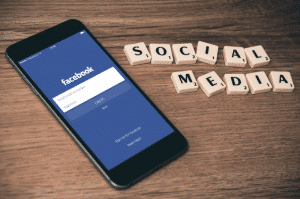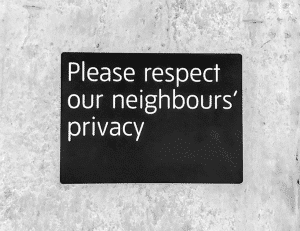
Crowdsourcing has changed the way the world does business. In the past decade 85% of the best global brands (Apple, Google, Coca Cola, Microsoft) have taken advantage of the booming crowdsourcing market (Steve, 2015). Few concepts in business have been so popular and appealing. With the allure of lower costs, customer involvement, and diversity of perspective and opinion, it’s easy to see why. How can you utilize crowdsourcing, and what should you consider before deciding if crowdsourcing is right for you?
What is crowdsourcing?
Crowdsourcing is a method of obtaining ideas by outsourcing a problem-solving task to an online community. By gathering creative response from multiple diverse sources, innovative approaches and solutions develop. Crowdsourcing compiles the sum of logged in human knowledge into a central source, providing informed guidance to individuals and helping businesses best create, support, and utilize customers.

Free Encyclopedic Online Knowledge
Wikipedia is the most popular online informational website that is constantly developing with crowdsourcing. Boasting more than seven billion visits in February 2018 alone , Wikipedia’s has more than five million English articles with 800 new articles coming out daily (Cunctator, 2018; Erik, 2018). Many of these articles are edited, written, and discussed in community forums by over 33 million English users, who refer to themselves as Wikipedians (Bignose, 2018). Anyone who visits Wikipedia can edit the articles and become a Wikipedian. Edits are read and reviewed by a group of workers hired by Wikipedia as well as a trusted group of active Wikipedians who account for 50% of the edits (Pipedreamer, 2015).
Medical Miracles
A 22-year-old college student was on her way to school when she fell off her bike and hit her head so hard her helmet cracked in two. The accident lead to chronic migraines, heart problems, and spinal issues. After years of treatment and $250,000 in medical bills, no progress was made. She then found CrowdMed, a crowdsourcing website founded in 2012 that assists patients who have found little success with medical visits. For only $150-$350, she submitted her case for analysis by doctors, nurses, medical students, Eastern Medicine practitioners, and other patients with similar ailments. The medical detectives who reviewed her case believed that she may have a form of complex headache and referred her to the Cleveland Clinic. There she was diagnosed with a post-concussive complex migraine syndrome and, with their assistance, was able to ease her debilitating pain with the right combination of treatment and medications. She credits the medical detectives for helping point her in the right direction and providing positive encouragement throughout the process (Christina, 2015).
Online Microtasking Provides Valuable Service
Amazon Mechanical Turk (MTurk) is a crowdsourcing marketplace where anyone can browse small tasks that companies need completed. The tasks can be as simple as identifying objects in a photo or video or answering a survey about a product. Although providers earn only a few cents per task from requesters, some have turned MTurk into a full-time job making $150-$300 a week (Mike, 2016). Other companies are willing to pay large amounts for help with their crowdsourced projects. For example, the GO FLY competition by BOEING challenges participants to create a safe, quiet, compact, personal flying device capable of flying twenty miles. The grand prize for the highest rated prototype is set at one million dollars.
Other projects, according to Wikepedia (ha), include missing person searches, social science experiments, artistic and educational research, and third party programming used for processing photos or videos, data cleaning and verification, information collection, and data processing.

Because I Love the Brand
Companies today have large fanbases who follow every change the company makes. These fans want the company to improve, and crowdsourcing has enabled them to put in their own time and effort to help. In 2008, Starbucks launched the website, My Starbucks Idea, where customers can suggest improvements to anything from drinks to the music played in the store. In the first year, over 70,000 ideas were generated by fans. Since then Starbucks has implemented approximately 300 submitted fan ideas into stores (Tina, 2015).
Advantages and Disadvantages to Crowdsourcing
Cost Reduction
Through crowdsourcing, you can outsource work to thousands of free laborers. This enables your companies to eliminate overhead and minimize management.
Company Engagement
Crowdsourcing enables companies to receive feedback from current and past customers. It also allows them to engage one-on-one with their customers in real time.
Creativity and Diversity
With crowdsourcing, companies can maximize their options. They can choose from thousands of different submissions that will vary in design and creativity.
Missing the Talent
While numbers aren’t an issue when dealing with crowdsourcing the quality can. Multiple ideas will not always equal a great idea. Instead of hiring someone who can accomplish the task, you may be stuck waiting to find somebody.
Popularity Can be Misleading
When you crowdsource an idea, things can get messy. Rather than getting a correct answer, a popular answer can win out. A recent online poll to determine the name of a polar research vessel ended with the name Boaty McBoatface leading the polls. Those who created the poll were smart to say the winning name would be a suggestion, however due to popularity the name may stay.
No Confidentiality
By being transparent with customers and engaging with them online, you leave yourself vulnerable to other companies viewing you progress. This may reduce your competitive advantage.
Hidden Costs
Time is money, right? Searching through thousands of suggestions can be time consuming.

I’m the mom psychologist who will help you GetKidsInternetSafe.
Onward to More Awesome Parenting,
Tracy S. Bennett, Ph.D.
Mom, Clinical Psychologist, CSUCI Adjunct Faculty
GetKidsInternetSafe.com
Works Cited
Bignose (2018) Wikipedia:Wikipedians
Christina F. (2015) CrowdMed: Would you trust Internet sleuths to diagnose rare disease?
Erik Z. (2018) Page Views for Wikipedia, Non-mobile site, Normalized
Mike N. (2016) Mechanical Turk Review: How I Made $21,000 A Quarter At A Time
Pipedreamer (2015) Wikipedia, the Father of Crowdsourcing
Steve O. (2015) The State of Crowdsourcing
The Cunctator (2018) Wikipedia:Statistics
Tina G. (2015) My Starbucks Idea: The Starbucks crowdsourcing success story
Photo Credits
People Stefano Montagner, CC BY-NC-ND 2.0
Wikipedia Shawn, CC BY-NC 2.0
I love Starbucks Thaddeus Stewart, CC BY-NC-ND 2.0






